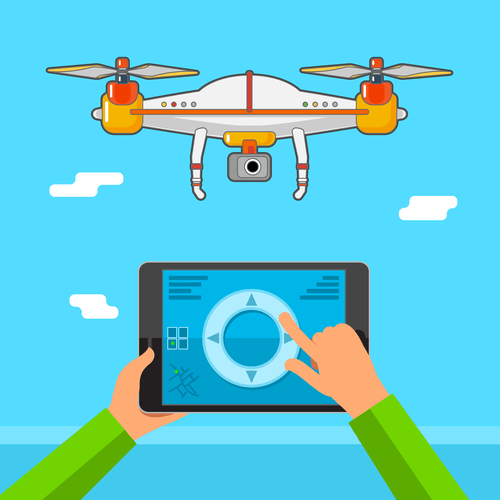Many ERP software applications are critical to companies because they help them implement resource planning by integrating all the processes needed to run their companies with a single system. Enterprise software solutions such as customer relationship management, marketing automation, and contact center software have made it possible for organizations to develop a detailed understanding of their clients and their needs. By bringing together and centralizing customer data, enterprises can deliver a personalized service experience that meets customer demands. Enterprise application software performs business functions such as order processing, procurement, production scheduling, customer information management, energy management, and accounting. Because these different functions are integrated and can all draw off each other, businesses can streamline their processes and improve collaboration across teams, which in turn creates efficiencies. Thus, to obtain the maximum benefit from enterprise resource planning software, the organizations should change their way of working according to the business processes of software instead of customizing the software.
At the time a customer places an order, for example, the salesperson might not be able to tell him whether the desired items are in inventory or are to be produced. With third-party integrations it is possible to make payment transactions safer, faster, and easier. With these services, the program can adjust to large-scale business needs without decreasing high standards of performance. Operational CRM contacts clients, stores all the necessary information on them, helps companies during the entire customer lifecycle. Maryia is an avid technology enthusiast who constantly follows the developments in the industry and enjoys shedding light on the hottest IT topics. She combines her own in-depth research with the direct input from seasoned engineers to create insightful and empowering content.
Free Enterprise As Law and Economics
The original home of contemporary free markets was England between the 16th and 18th centuries. This growth coincided with, and probably contributed to the first industrial revolution and birth of modern capitalism. At one time, the English legal code was completely free of international trade barriers, tariffs, barriers to entry in most industries, and limitations on private business contracts.

Since data is the lifeblood of every modern company, ERP makes it easier to collect, organize, analyze, and distribute this information to every individual and system that needs it to best fulfill their role and responsibility.
Scale resources
These frameworks are commonly designed to provide abnormal amounts of exchange or transaction execution and data security. The business processes in each business function were disparate and not capable of sharing information with each other. It was difficult for the managers to assemble the data fragmented into separate systems in order to present an overall picture of the organization’s operations and take firm-wide decisions.
In 1913, engineer Ford Whitman Harris developed what became known as the economic order quantity (EOQ) model, a paper-based manufacturing system for production scheduling. Toolmaker Black and Decker changed the game in 1964 when it became the first company to adopt a material requirements planning (MRP) solution that combined EOQ concepts with a mainframe computer. ERP Systems and software support multiple functions across the https://www.globalcloudteam.com/ enterprise, mid-sized, or small businesses, including customizations for your industry. Free enterprise and capitalism are related, though the two terms are different. Free enterprise refers to how a free market system has minimal barriers regarding the exchange of wealth or transacting of goods and services. On the other hand, capitalism is primarily centered on the creation of that wealth or production of those goods.
Enterprise Information System (EIS)
When a free enterprise society in fully operational, consumers often have freedom, efficiency, stability, security, growth opportunities, and justice. The United States also used a largely free-market legal approach during the 18th and 19th centuries. In modern times, however, both the United States and the United Kingdom are better classified as mixed economies. Countries such as Singapore, Hong Kong, and Switzerland are more reflective of free enterprise. Systems programmers and IT managers must determine when newer versions of operating systems make sense and plan how to integrate them into existing environments. Perform online research on the economic development and reforms in Rwanda since the mid-2000s.
- ERP also ensures that these data fields and attributes roll up to the correct account in the company’s general ledger so that all costs are properly tracked and represented.
- Organizations have always struggled to balance traditional ERP’s high costs and complexity against the need for customized features and flexibility, all while meeting the demands of the business.
- Database administrators must select the DBMS or DBMSs that efficiently process the daily transactions and also provide sufficient horsepower for decision support.
- An EIS is currently used in conjunction with customer relationship management and supply chain management systems to automate business processes.
- For example, IBM’s Business Intelligence platform (Cognos), integrates with a predictive analytics platform (SPSS) and can obtain records from its database packages (Infosphere, DB2).
Augmenting and integrating legacy software with cloud applications can complement, enhance, and supplement important tasks. This approach can breathe new life into legacy ERP systems, giving businesses a great opportunity to start adopting cloud capabilities. A key ERP principle is the central collection of data for wide distribution. With a secure and centralized data repository, everyone in the organization can be confident that data is correct, up-to-date, and complete. Data integrity is assured for every task performed throughout the organization, from a quarterly financial statement to a single outstanding receivables report, without relying on error-prone spreadsheets. Systems management includes a variety of functions for managing computers in a networked environment.
Systems and Storage Management
ERP systems tie together a multitude of business processes and enable the flow of data between them. By collecting an organization’s shared transactional data from multiple sources, ERP systems eliminate data duplication and provide data integrity with a single source of truth. A free enterprise system is an economic system enterprise system definition where a government places very few restrictions on the types of business activities or ownership that citizens want to engage in. Free enterprise countries usually have strong competition among businesses and allow citizens to purchase land and buildings, set their own prices, and choose who they want to do business with.
These advanced technologies deliver data and capabilities that not only enhance many traditional ERP functions; they create new opportunities for increased efficiencies, new services, and deeper insight across an enterprise. Since ERP systems are comprehensive across an enterprise, their management often involves a partnership with the CFO as well as the CIO, COO, and other key executive leaders. A complete ERP suite also includes enterprise performance management, software that helps plan, budget, predict, and report on an organization’s financial results. See the industry-leading enterprise resource planning (ERP) cloud solution, serving as your integrated management of business processes and applications, to gain resilience and real-time agility, to position yourself for growth.
Process preparation
Custom–integrated solutions typically run on workstation or server-class computers. Enterprise appliance transaction modules (EATM)—These devices communicate directly with plant floor equipment and with the ERP system via methods supported by the ERP system. EATM can employ a staging table, web services, or system–specific program interfaces (APIs). Each type of enterprise software solution focuses on specific goals and offers different functionalities. When deciding on which type of information system to choose, make sure it complies with strategic planning and major goals of your business. The supply chain is the entire production flow that consists of a number of actions performed by an organization to convert raw materials into finished products and services.

Generally there are three deployment options for ERP systems; Cloud-based, on-premise, and a hybrid of the two. Within these options, a business can choose from hundreds of types such as finance, supply chain management, and human resource management. Men’s grooming product maker Fulton & Roark successfully implemented enterprise resource planning to better track inventory and financial data. Like many other businesses, the North Carolina company used spreadsheets to track inventory and accounting software to record financial data. Reporting and analytics for legacy systems typically require involvement from a third-party vendor to generate operational business intelligence.
enterprise systems management
Cadbury, a global confectioner and maker of the popular chocolate Cadbury egg, also successfully implemented an ERP system. The company had thousands of systems but could not keep pace with its rapid growth and used ineffective warehouse management systems. As cloud-based solutions have grown in popularity in recent years, the traditional ERP industry leaders have seen challenges from upstarts such as Bizowie and Workwise. Built for the digital age, today’s ERP cloud embraces mobile, social, analytics, and the latest emerging technologies. Cloud-based ERP applications are often embedded with next-generation technologies, such as the internet of things (IoT), blockchain, AI, machine learning, and digital assistants.
